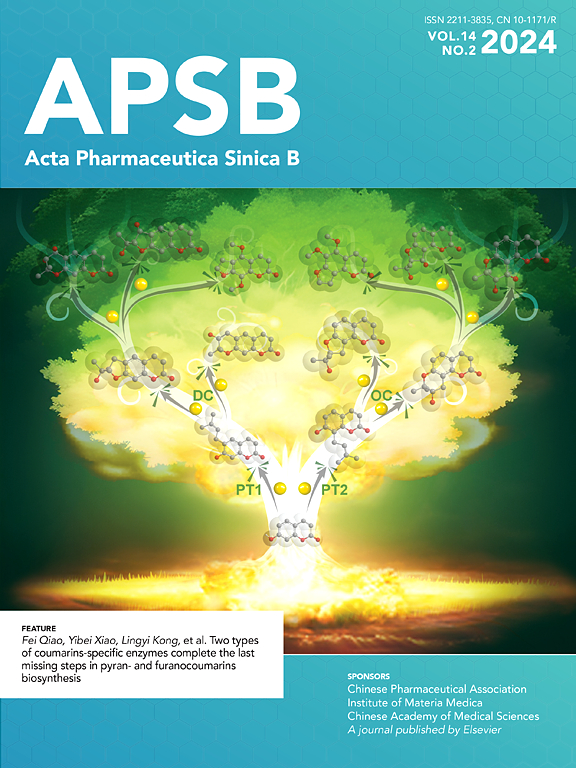Phenotypic plasticity and secretory heterogeneity in subpopulations derived from single cancer cell
IF 14.6
1区 医学
Q1 PHARMACOLOGY & PHARMACY
引用次数: 0
Abstract
Single-cell analysis of phenotypic plasticity could improve the development of more effective therapeutics. Still, the development of tools to measure single-cell heterogeneity has lagged due to difficulties in manipulating and culturing single cells. Here, we describe a single-cell culture and phenotyping platform that employs a starburst microfluidic network and automatic liquid handling system to capture single cells for long-term culture and multi-dimensional analysis and quantify their clonal properties via their surface biomarker and secreted cytokine/growth factor profiles. Studies performed on this platform found that cells derived from single-cell cultures maintained phenotypic equilibria similar to their parental populations. Single-cell cultures exposed to chemotherapeutic drugs stochastically disrupted this balance to favor stem-like cells. They had enhanced expression of mRNAs and secreted factors associated with cell signaling, survival, and differentiation. This single-cell analysis approach can be extended to analyze more complex phenotypes and screen responses to therapeutic targets.

来自单个癌细胞的亚群的表型可塑性和分泌异质性
单细胞表型可塑性分析可以促进更有效的治疗方法的发展。尽管如此,测量单细胞异质性的工具的发展仍然滞后,因为在操纵和培养单细胞方面存在困难。在这里,我们描述了一个单细胞培养和表型平台,该平台采用星爆微流体网络和自动液体处理系统来捕获单细胞进行长期培养和多维分析,并通过其表面生物标志物和分泌的细胞因子/生长因子谱来量化其克隆特性。在这个平台上进行的研究发现,来自单细胞培养的细胞保持了与其亲本群体相似的表型平衡。单细胞培养暴露于化疗药物随机破坏这种平衡,有利于干细胞。他们的mrna和与细胞信号、存活和分化相关的分泌因子的表达增强。这种单细胞分析方法可以扩展到分析更复杂的表型和筛选对治疗目标的反应。
本文章由计算机程序翻译,如有差异,请以英文原文为准。
求助全文
约1分钟内获得全文
求助全文
来源期刊

Acta Pharmaceutica Sinica. B
Pharmacology, Toxicology and Pharmaceutics-General Pharmacology, Toxicology and Pharmaceutics
CiteScore
22.40
自引率
5.50%
发文量
1051
审稿时长
19 weeks
期刊介绍:
The Journal of the Institute of Materia Medica, Chinese Academy of Medical Sciences, and the Chinese Pharmaceutical Association oversees the peer review process for Acta Pharmaceutica Sinica. B (APSB).
Published monthly in English, APSB is dedicated to disseminating significant original research articles, rapid communications, and high-quality reviews that highlight recent advances across various pharmaceutical sciences domains. These encompass pharmacology, pharmaceutics, medicinal chemistry, natural products, pharmacognosy, pharmaceutical analysis, and pharmacokinetics.
A part of the Acta Pharmaceutica Sinica series, established in 1953 and indexed in prominent databases like Chemical Abstracts, Index Medicus, SciFinder Scholar, Biological Abstracts, International Pharmaceutical Abstracts, Cambridge Scientific Abstracts, and Current Bibliography on Science and Technology, APSB is sponsored by the Institute of Materia Medica, Chinese Academy of Medical Sciences, and the Chinese Pharmaceutical Association. Its production and hosting are facilitated by Elsevier B.V. This collaborative effort ensures APSB's commitment to delivering valuable contributions to the pharmaceutical sciences community.
 求助内容:
求助内容: 应助结果提醒方式:
应助结果提醒方式:


